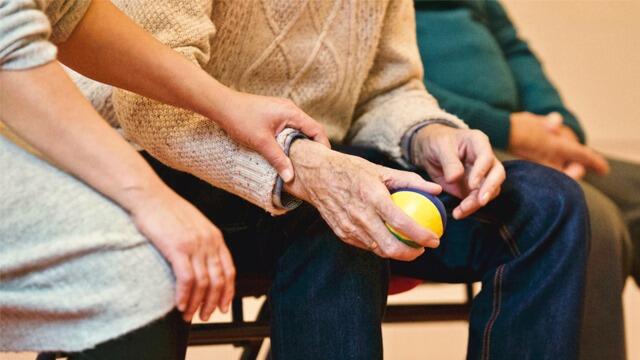Indoor visits to long-term care homes stymied by rules and enforcement
Published July 26, 2020 at 4:50 pm

Though Ontario has allowed visitors inside long-term care homes for the better part of a week, Mary Oko is still seeing her mother outdoors.
Rules enforced during the visits mean there’s little benefit to going inside the home, Oko said, and at least this way her mom gets some sunshine.
“I’d rather have my mom outside where at least she can get some fresh air,” she said. “Her world is becoming smaller and smaller because for four months, she’s always in that home.”
The provincial government has said that physical distancing is not necessary for indoor visits, but many homes are playing it safe and have taken it upon themselves to enforce the rule in an effort to prevent the spread of COVID-19 anyway, experts said, including the Toronto facility where Oko’s mother has lived for eight years.
Those rules have made it hard for Oko to relate to her mother, who has Alzheimer’s disease and is really only able to interact with people who are up close.
Oko found ways to make that work pre-pandemic, she said, playing music and helping her mom clap her hands.
“She’s very sensitive to that. And then she’s engaged and she starts laughing and smiling. But you know, when I’m six feet away and I’m playing music, I could be on another planet,” she said.
Oko, who is the head of the family council at the facility where her mom lives, said she’s heard similar complaints from others.
Before the COVID-19 pandemic forced long-term care homes to close their doors to all but the most “essential” of visitors, often on their way to see palliative patients, Oko served as one of her mother’s caregivers.
“Whenever I was visiting with my mom, I would help feed her. I would help her to go to the toilet. I would help her get dressed if she needed to, or would put her to bed,” she said.
Now, though the pandemic still poses a threat, she’d like to get back to that routine.
“This is not sustainable. We need to have a more workable solution because COVID is going to be with us for a while. I can see each visit, my mom is declining. And so at what point is that going to become where she’s not even going to be engaging?” she said. “I can’t do anything. I can only see her once a week for half an hour. That’s it.”
It’s a problem Jane Meadus, a lawyer and institutional advocate with the Toronto-based Advocacy Centre for the Elderly, said she’s hearing about from across the province.
“We really need to get people in to provide some of the care that they were doing before. Do some feeding, do other things, and we’re certainly not seeing that. So it’s great when someone can come in and talk to someone, but we need more.”
While the government has said “essential caregivers” can be allowed in to the homes — and has said that often those caregivers are family members — Meadus said such visits are not widespread.
“The homes are taking very restrictive control of these visits, which is extremely, extremely problematic,” she said.
She said the issue stems from the homes’ interpretation of the government’s policy on physical contact.
A spokeswoman for the Ministry of Long-Term Care said in an email that “any physical contact can be considered if it is low risk to the resident, does not involve directly facing the resident, and will help with the resident’s social and emotional well-being” — but only for indoor visits with people who have tested negative for COVID-19.
But many facilities are not allowing even that narrow form of touch, Meadus said.
“People need contact and they need contact from loved ones,” she said.
In a written statement, the president and CEO of the Ontario Long-Term Care Association, an industry group, said members are working to balance emotional well-being and physical safety.
“No one had any idea it would be this long before we could open to visitors, and the separation has taken a significant toll on residents and their families,” Donna Duncan said. “Ontario’s long-term care homes are doing everything they can to welcome back visitors while ensuring that critical protections are in place.”
But Oko, who hasn’t touched her mother since before the pandemic began, said more could be done.
“I’m willing — just like all the other families — to do whatever it takes to keep our loved ones safe,” she said. “Dress me up in full PPE, I’m willing to do it. I’m willing to do the COVID tests, I’m willing to do anything, but we need to have access to our loved ones. We need to be able to hold and touch and hug them.”
This report by The Canadian Press was first published July 26, 2020.
Nicole Thompson, The Canadian Press
insauga's Editorial Standards and Policies advertising





